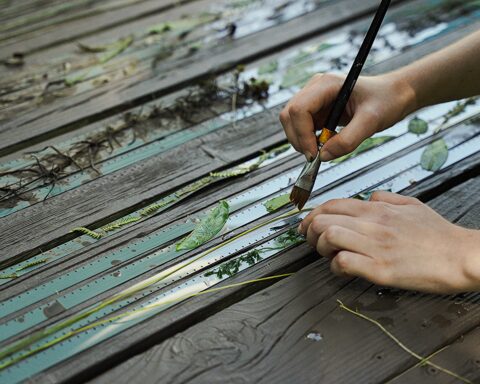Immigration is reshaping Ontario’s classrooms, changing the demographics of both students and teachers. The latest statistics indicate that one in 10 new teachers hired in Ontario is internationally-trained (about 1,000 of 11,000 new teachers in 2016). The transition is never easy for these newcomer teachers as they get used to cultural norms very different from their home nations and learn to deal with a room full of students who may not always look up to the person standing in front of the classroom.
Hycinth Gomez, an Indian immigrant working at a private Montessori school, can attest to some of these “unique circumstances”. Starting out as a volunteer before moving her way up to her current teaching role, she still found herself faced with difficulties that others did not face – at least not to the same extent.
“I started as a supply teacher in an elementary school and sometimes I had to bear more than the class teacher. I used to get badgered so much because children knew I was not there permanently,” says Hycinth Gomez. Having taught in Ontario for almost eight years now, she has had the opportunity to work with a number of age groups through additional UCMAS (Universal Concepts of Mental Arithmetic Systems) courses she also helps administer.
Immigrants coming from developing countries may also bring their own set of values and norms, serving perhaps as important role models for students who may not always see visible minorities in positions of authority and instruction. The student-teacher dynamic is one that new instructors navigate delicately as they get used to Canadian norms.
“When I was growing up, my teacher was like an empowering tower on me and I was always shushed whenever I asked more than one question. Whereas in Canada, asking questions and handling them positively is the norm,” Gomez points out.
Childcare responsibilities
This dynamic is not unique to elementary or high school classrooms. A female immigrant scientist* who teaches at the University of Toronto, vents her own frustration. “Students find my accent funny. They come to me for help all the time, during and after the class. But my accent gives me a hard time.” She is convinced that part of the problem is her gender, pointing out that no male faculty member seems to face the same hardship.
Female teachers can be perceived as exercising less authority in a classroom and there is some evidence to suggest this is a hard-wired bias. Recent studies based on student evaluations reveal that male teachers receive higher scores in a number of areas, including aspects that were readily comparable. For example, when reviewing categories such as “promptness” – which refers to how quickly an assignment was returned – male instructors scored 16 per cent higher than their female peers.
Dr. John Shields, a professor in the department of Politics and Public Administration at Ryerson University and an authority on the subject of immigrant settlement and integration, also attributes this to a hard-wired bias. “Immigrant teachers lack the relevant experience. Specifically, female immigrant teachers have difficulty in commanding authority in a classroom due to gender bias. As a result, students put extra demands, for example [demanding] retests, more time, even if the deadline is met, which burdens their work.”
Shields further highlights the societal pressures that extends to women students at the university level, saying, “Although the number of female students is a lot more than male students, it is still quite demanding for them considering the fact that the responsibility of childcare or an elderly family member is more upon women than men.”
Older teachers
Mehreen Faisal, who recently graduated from Ryerson University with distinction, couldn’t agree more. She states, “As a mother I have more responsibility of the house and kids and studying with that status gives me extra pressure to cope up with my family life and studies at the same time.” A Vanier Institute of the Family info-graphic titled “Women, Caregiving and Work in Canada”, confirms that Faisal is not alone. Women are more likely than men to report having spent 20 hours or more per week providing care, separate from what they are employed to do.
A third issue for newcomer high school teachers like Linda Mourot, who started teaching later in life, is the perception that she is perhaps taking a job away from a younger person. “People think that if I am going to college at the age of 50, its very shameful as there are so many young people out there looking for jobs and here I am at this age who is going to take a job needed by young people.”
However, in Mourot’s case, her experience has only made her more bold and confident. As a teacher of French in an officially bilingual nation, she is amazed that some students seem averse to learning a new language. Many parents do not realize the importance of learning French. “They have never travelled outside of Canada, never even to French-speaking Canada, so they see no use of French. You never know young people today may find a French speaking girlfriend tomorrow, but they find it funny.”
With their wider spectrum of experiences, immigrant teachers offer a variety of new perspectives that can make all the difference in helping to widen a child’s horizons. However, these teachers face real challenges. After all, it is surely not an accident that a settlement organization like Skills for Changes in Toronto owes it origins in 1982 to “five English as a Second Language teachers [who] identified a need and shared a vision for integrated skills and language training.”
*identity has been kept confidential to protect individual
This piece is part of the “Ethnic Women as Active Participants in Ontario” series. Writers interested in participating are encouraged to join the NCM Collective for an opportunity.
Asfia Yasir writes for New Canadian Media through the mentorship program. A banker by profession, she has a Masters degree in Public Administration from Karachi University and lived and worked in Dubai before she moved to Canada. Yasir continues her passion for writing in her spare time.





